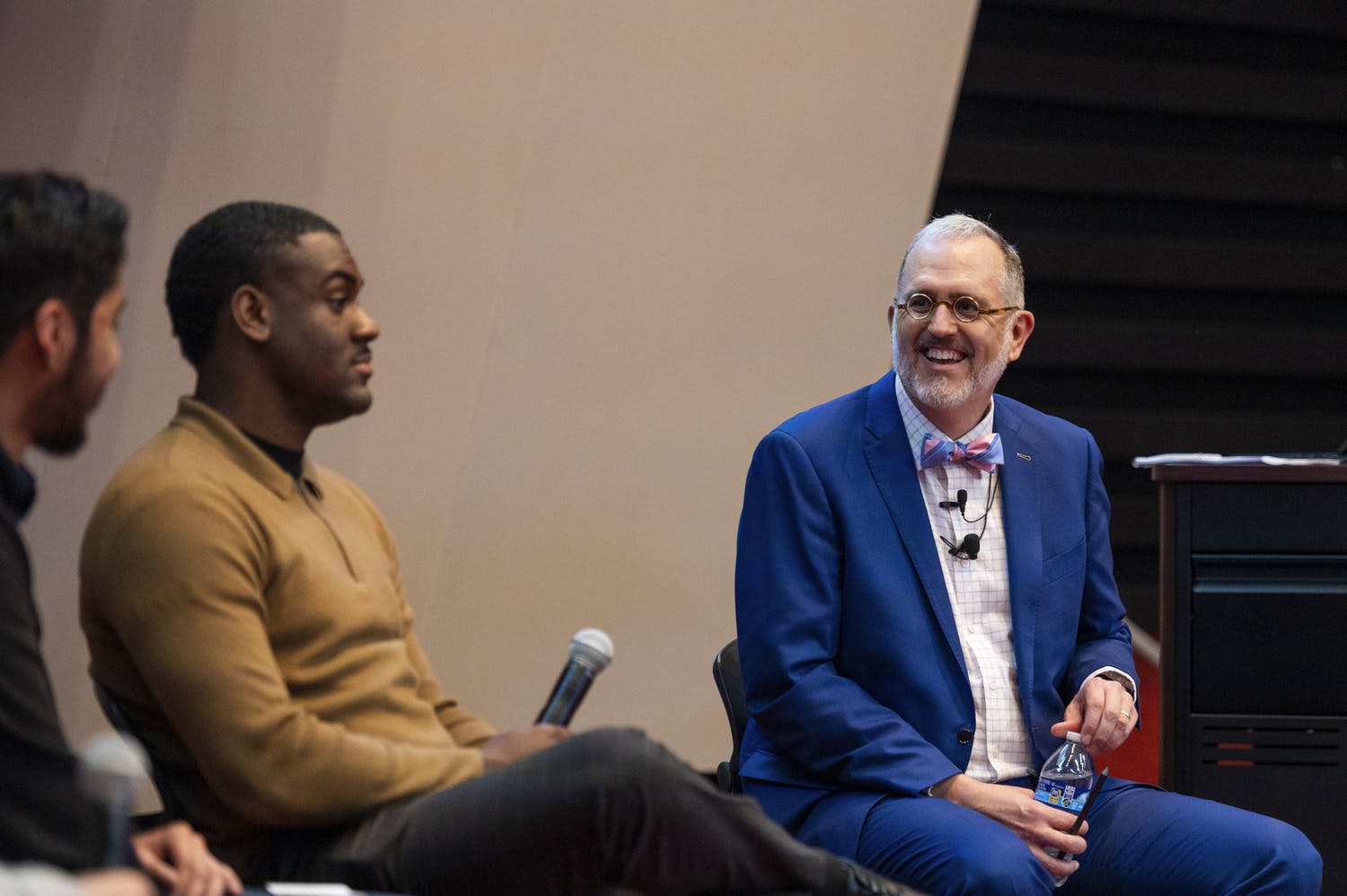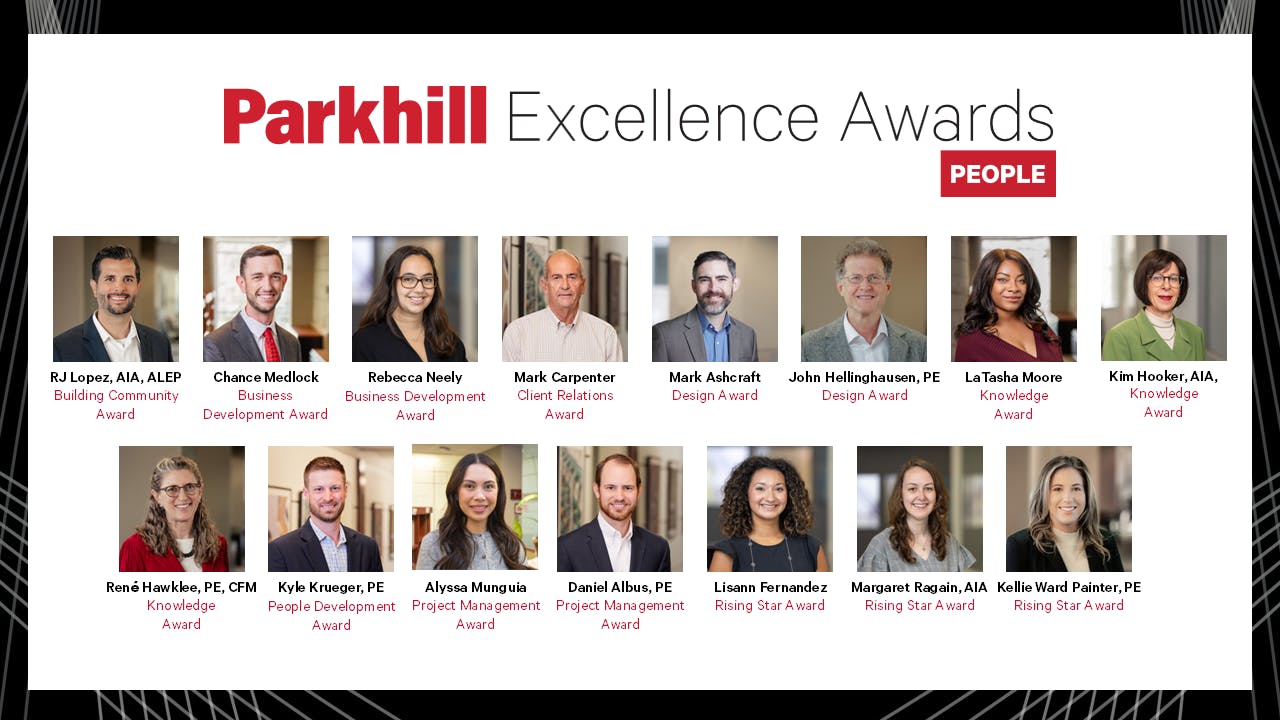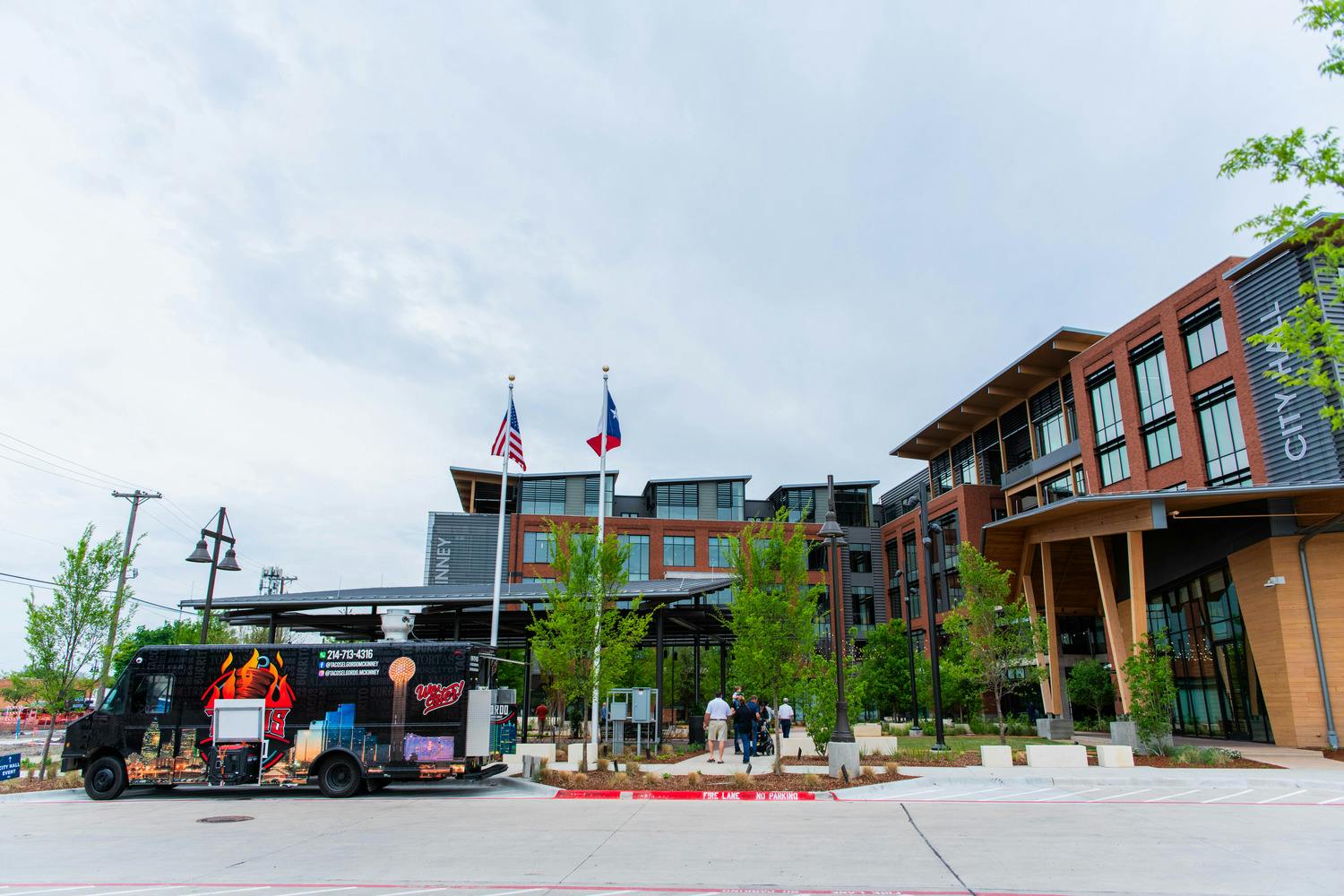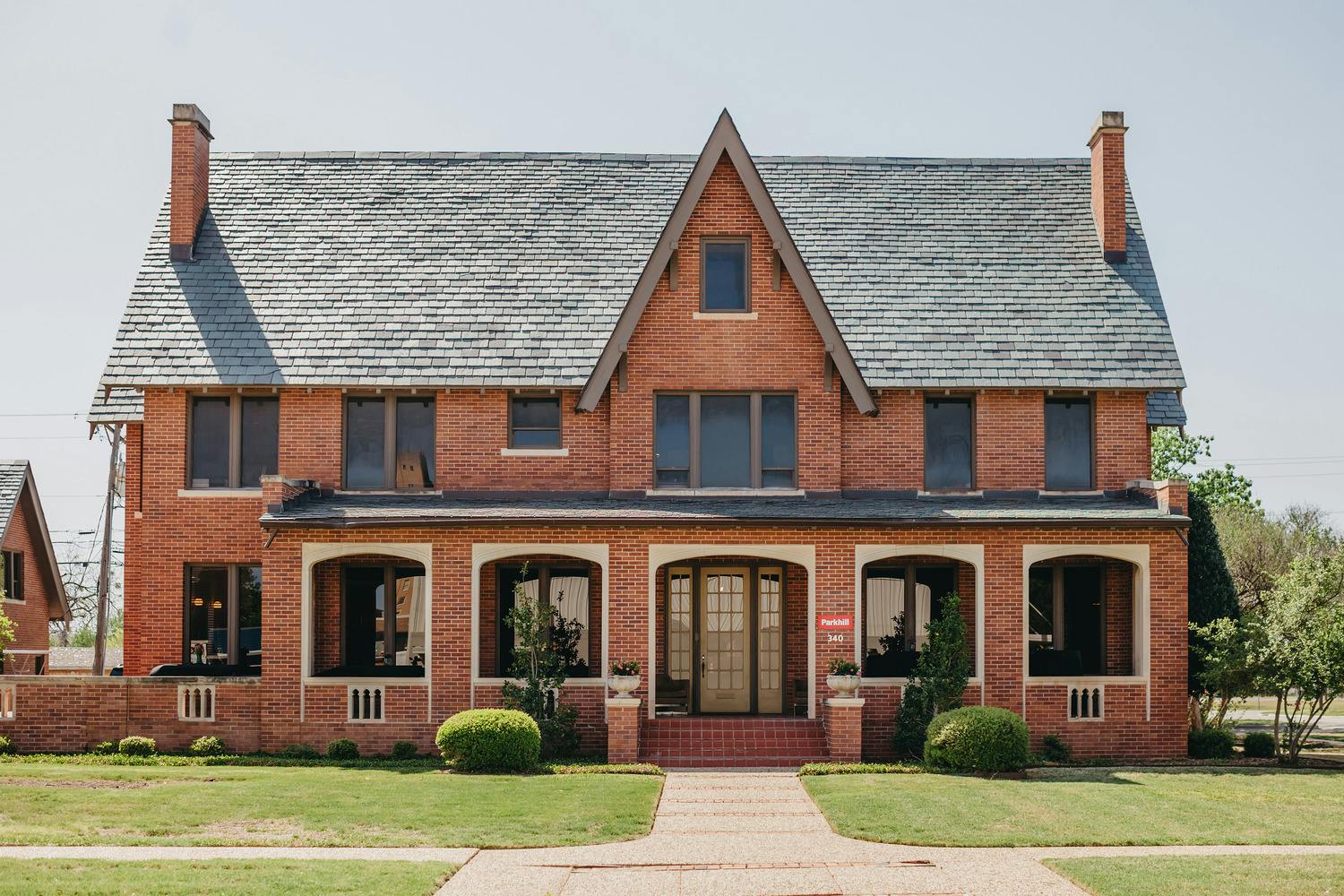Unassuming Influence: Life Lessons From the AIA Presidency
Category: Building Community
Written By: Chris Libby
Date: March 20, 2023

As Dan Hart, FAIA, PE, casually strolled through the World’s Expo in Dubai with several colleagues from The American Institute of Architects (AIA), he was enjoying the sights and sounds of his surroundings as any tourist would. When he and his traveling group were visiting that last stop on their list, the India Pavilion, the day took an unusual twist.
When they arrived, it appeared that a red-carpet reception was planned and something special was about to happen. Curious to see who or what this lavish welcoming party was for, they proceeded to enter only to quickly realize that delegates from the pavilion were eagerly waiting for their arrival—and more specifically, that Dan was among them.
The travel party was escorted on a personal tour through the structure, along with the accompanying exhibits, by the architect of the pavilion. The four-story auditorium, one of the largest pavilions at the Expo, is designed to showcase India’s contribution to the world, including growth and inspiration. The building’s theme, according to the pavilion’s website, IndaExpo2020.com, reflects “India’s commitment to the philosophy: Lokah Samastah Sukhino Bhavantu, which means, “May everyone, in the whole world, be happy.”
After the tour, Dan was asked to sit in on an expert panel and speak about the pavilion on behalf of the AIA. Dressed in typical tourist gear—jeans, sneakers, and a ball cap—he was not prepared for, or planning to make a speech. But he did speak to the crowd that day. With hat hair and a beaming smile, he commented on the exuberance embodied in the pavilion and about the need for architects to continue to make the world a better place through the built environment.
Perspective Provides Insight
Days later, when Dan read about his appearance in a magazine article, he reflected on the whole experience and was surprised by the energy and excitement of his presence. He understood the influence the AIA holds around the world and the unique position he was in.
“What I realized was that while I was just a tourist to see the Expo, I also was the President of The American Institute of Architects, and that matters to the world. It matters to other architects in other countries, and what they wanted was the stamp of approval from the AIA for what they accomplished,” he said. “It really solidified to me that as I went about my daily work, just sort of taking it for granted, but I was not always thinking about the gravity of the position I held.”
There were plenty of examples like that along the way, Dan said, “where I just had to stop and take a deep breath because who we are and what we're doing really matters. It’s hard to recognize that in every moment, but it’s also hard to imagine that amazing challenge and role to play as a leader of a profession.”
The Power of Purpose
Dan’s professional accolades and experience as an architect and engineer are impressive. He has been a practicing architect and engineer for more than three decades with a design focus of religious and educational facilities. He is the executive vice president of architecture at Parkhill, a Texas-based engineering and design firm, and has been heavily involved with his alma mater, Texas Tech University as an adjunct instructor and founding President of the Design Leadership Alliance there.
But it was the lofty role as the 98th President of the AIA that opened the door to experiences he would not have otherwise had. He felt a sense of agency that manifested in a responsibility to make the most positive impact with his presence and influence while he had the time and platform.
Just after Dan’s tenure as president of the country’s most esteemed professional organization for architects, membership surpassed 96,000 individuals — the largest it has ever been. If the power of influence truly exists, then using that agency for good can be a step in the right direction for making real, lasting changes from which we can all benefit.
“Every line we draw can either connect people and bring people together or divide and separate. That's a lot of agency. Every line we draw has that kind of power. The imaginary lines we draw have a great significance in the world.”
In order to achieve this, he believes, architects must understand their responsibility with a mindset that buildings are essential to human flourishing. How we view success isn’t just about structural achievements but rather how these creations are used, which shape how we function every single day.
“You can't really judge a building on the day it opens," Dan said. “You need to judge it five years after it has been lived in, loved, or not loved, so you can see how it holds up.”
A Path to Progress
Being AIA president wasn’t a lifelong goal and not even a role he imagined for himself. “It was not on my bucket list,” he said. It was a circuitous path of local, state, and leadership positions within the organization that eventually led to an opportunity to take the helm.
From his first meeting in Midland, Texas, at one of the smallest chapters in the country, to the highest echelon as 2022 AIA President, his enthusiastic approach to the profession combined with his awareness during and post-presidency about the unique position he is in to make a difference, gives him optimism about the future of the profession.
“This idea of pivoting and crossing thresholds became metaphorical to me, and I realized I have lived my life on thresholds,” Dan said. “This was a pivotal moment in the history of AIA, and there I was, standing on the threshold of what’s gone before and what’s happening next. What a privilege it was just to be there.”
During his tenure, Dan was able to preside over AIA's annual conference in Chicago, A’22, which included interviewing former President Barack Obama in front of a crowd of about 10,000, meet with dignitaries and policymakers around the world about sustainability; celebrate awards with esteemed colleagues within the industry whom he had admired from afar and influenced his own career for years; and was able to address issues of diversity and equity in architecture at some of the country’s most respected higher learning institutions, including historically black colleges and universities (HBCU) ... in just one year.
“Design is our superpower,” he said. “Maybe that sounds funny to say, but I'm very serious about it.”
He believes designers and design thinking have an essential role in shaping and creating environments that not only solve our greatest problems but also open the door to human flourishing. This mindset helps to see and meet those challenges head-on while delivering solutions that will have a lasting impact.
“We've got to be good listeners,” he explained. “We have to have the empathy, insight, and expertise to know how to collaborate with others in the process of design. We have to know the implications of drawing those imaginary lines.”
The future of design comes back to its essential purpose. In Dan’s mind, that is the value of community, and the end result always needs to be purposeful and helpful. “The product of architectural design is not the buildings … they are just a means to an end. The end itself is community. We are building community. Buildings are vessels, and I think we always need to remind ourselves of that.”


